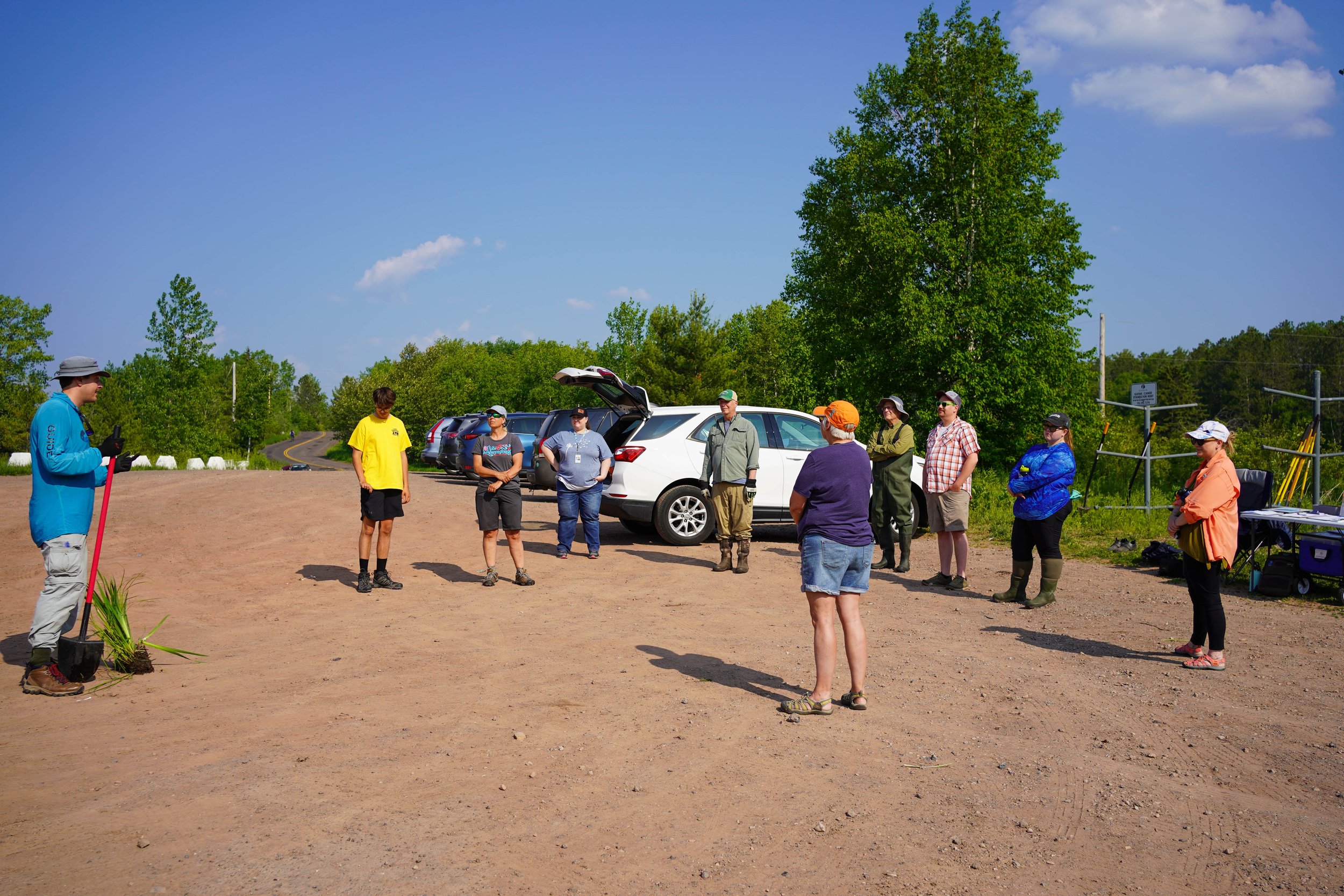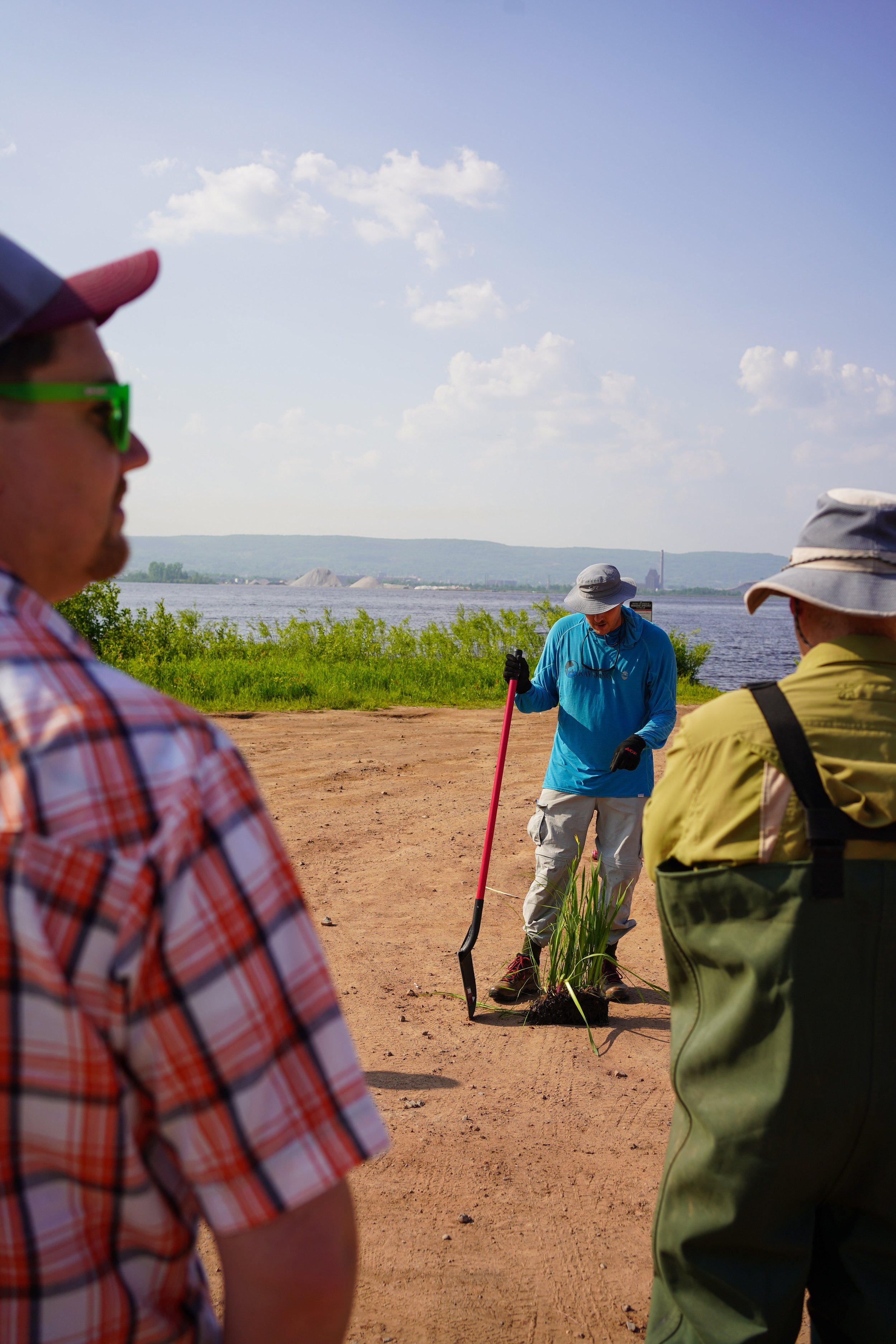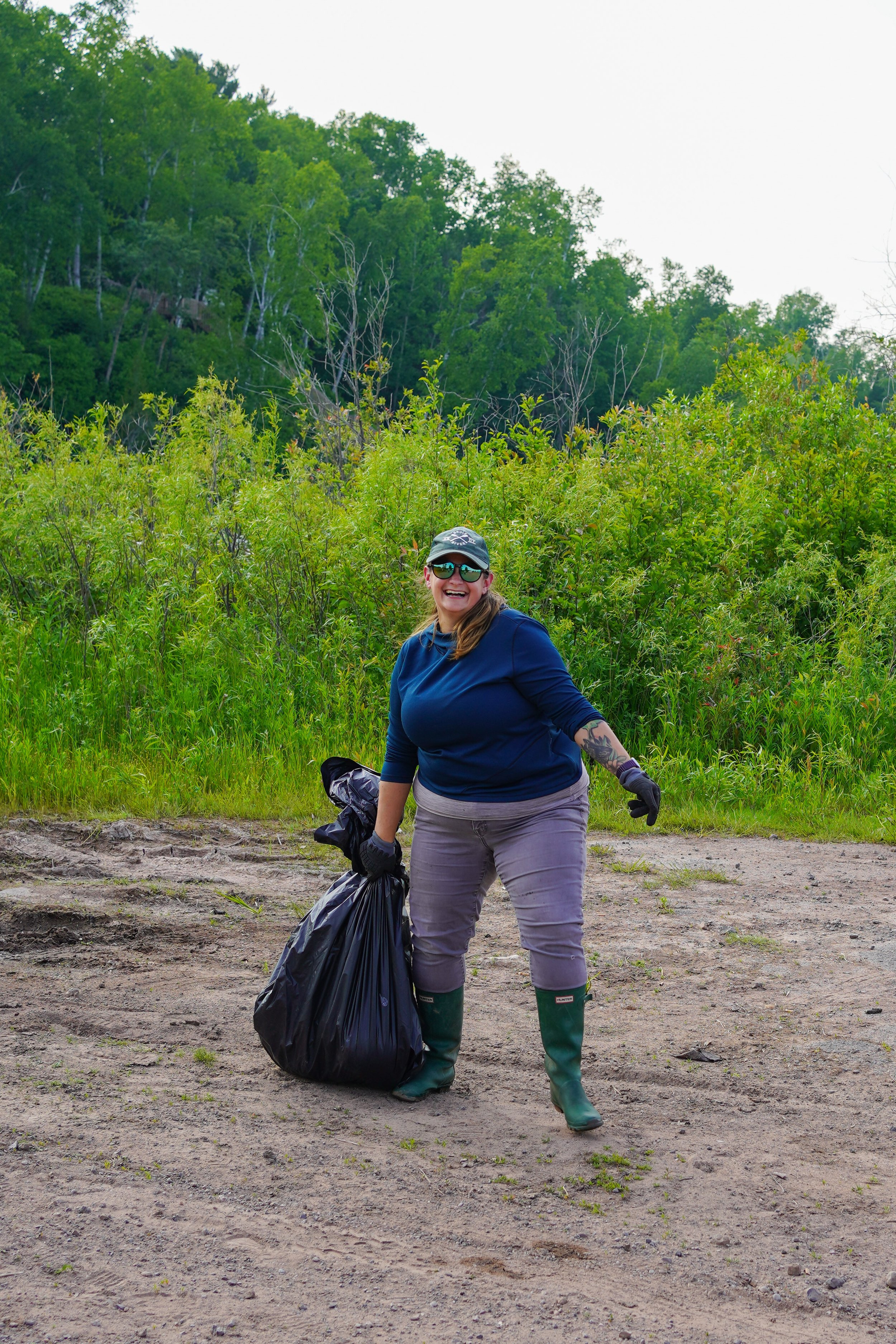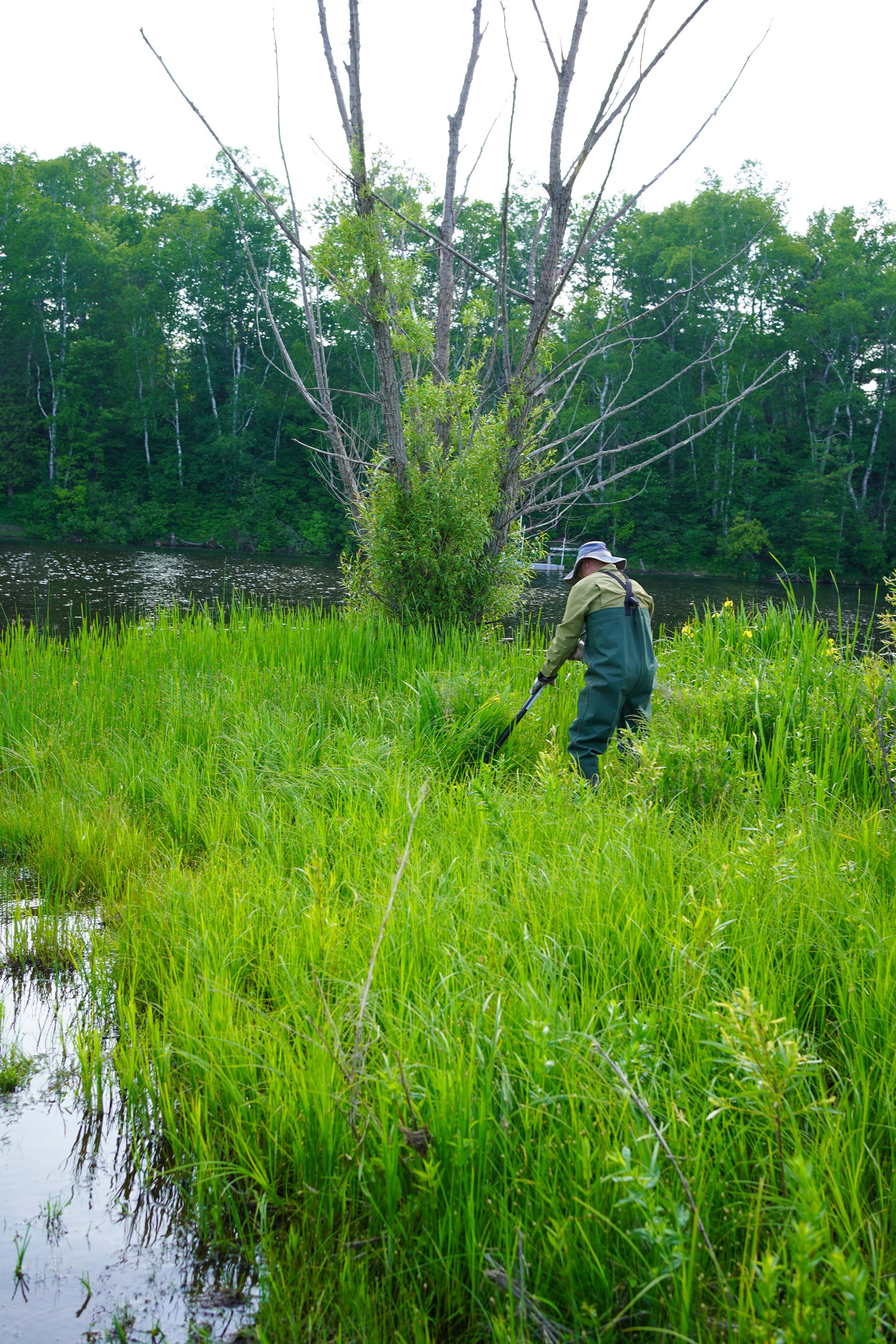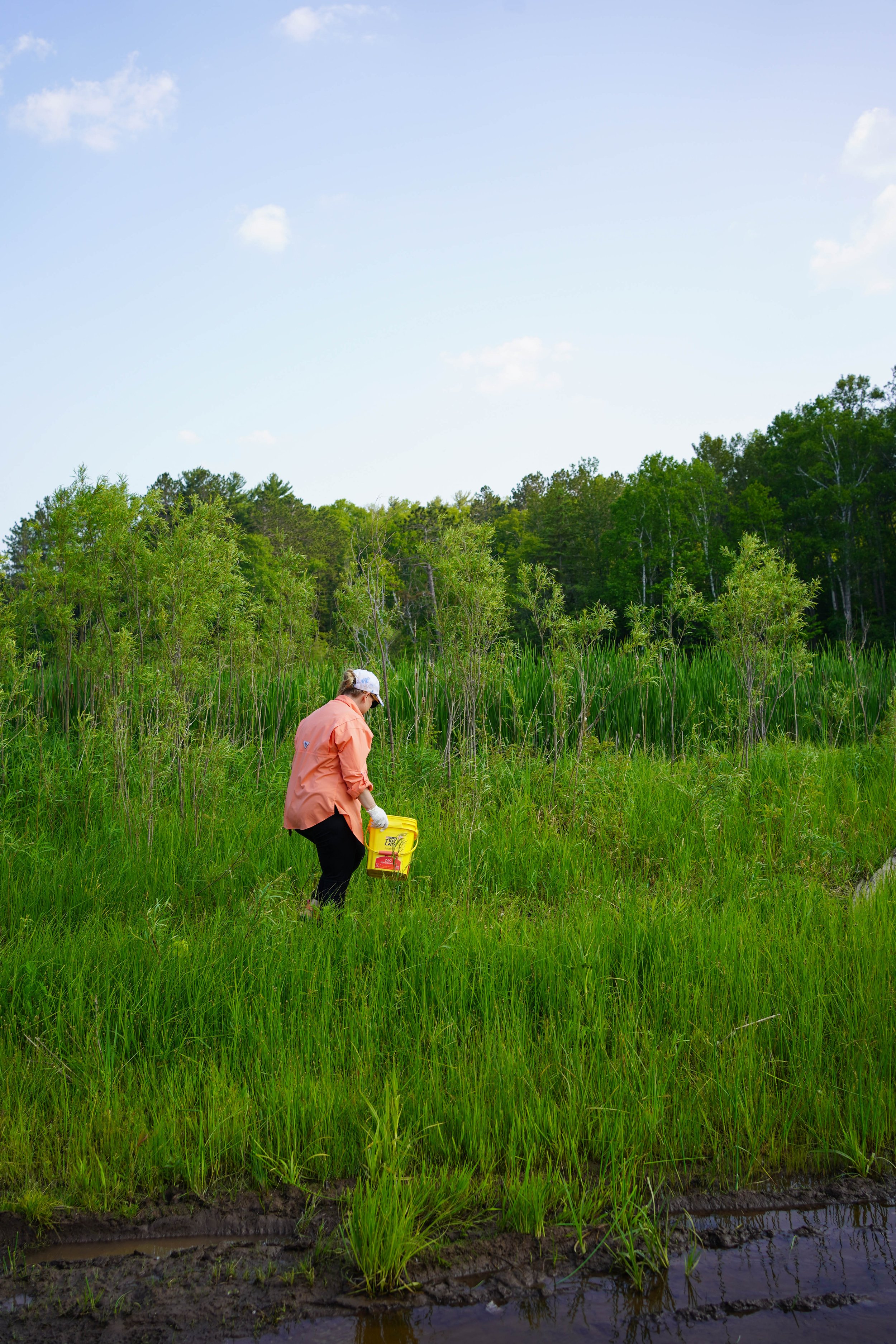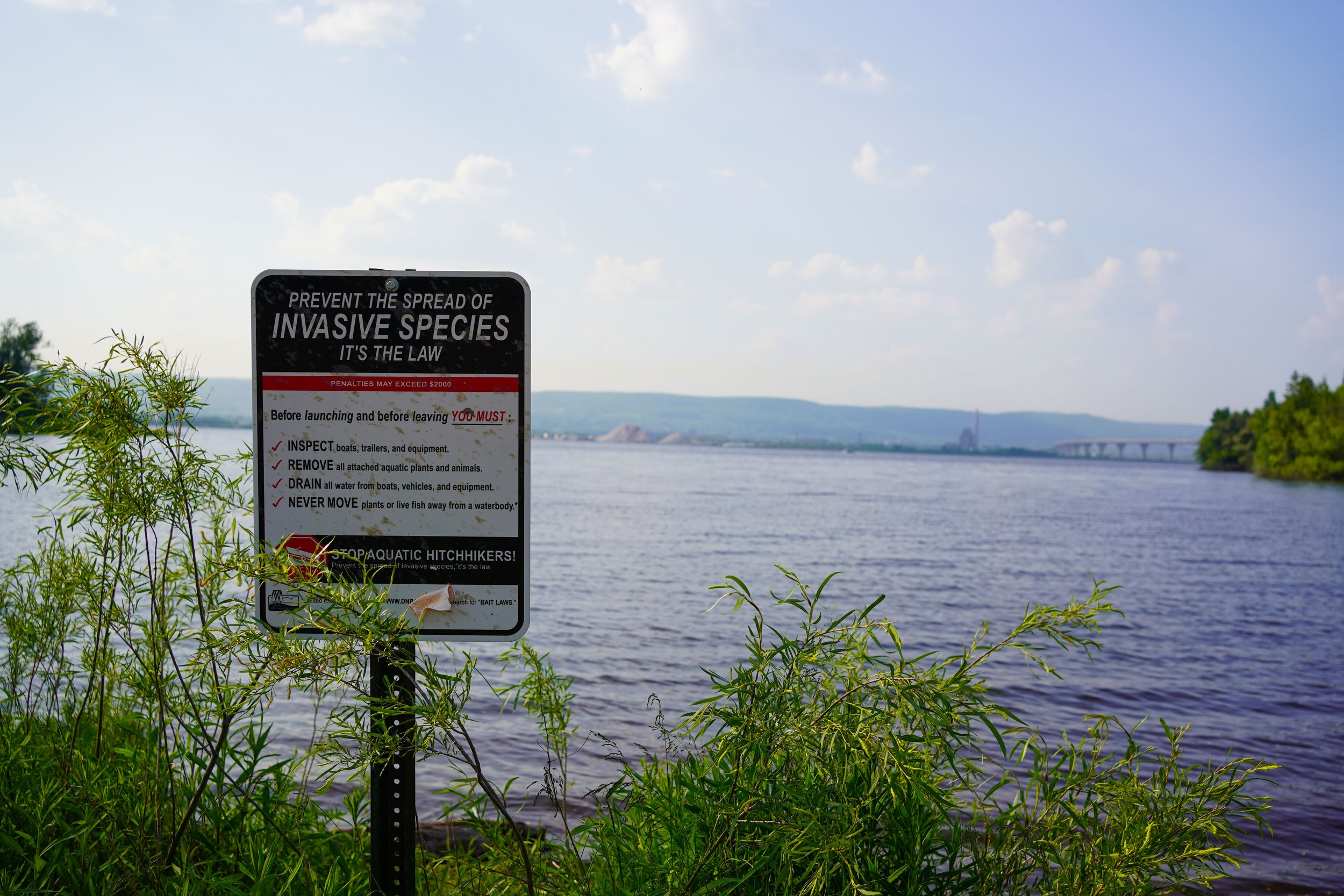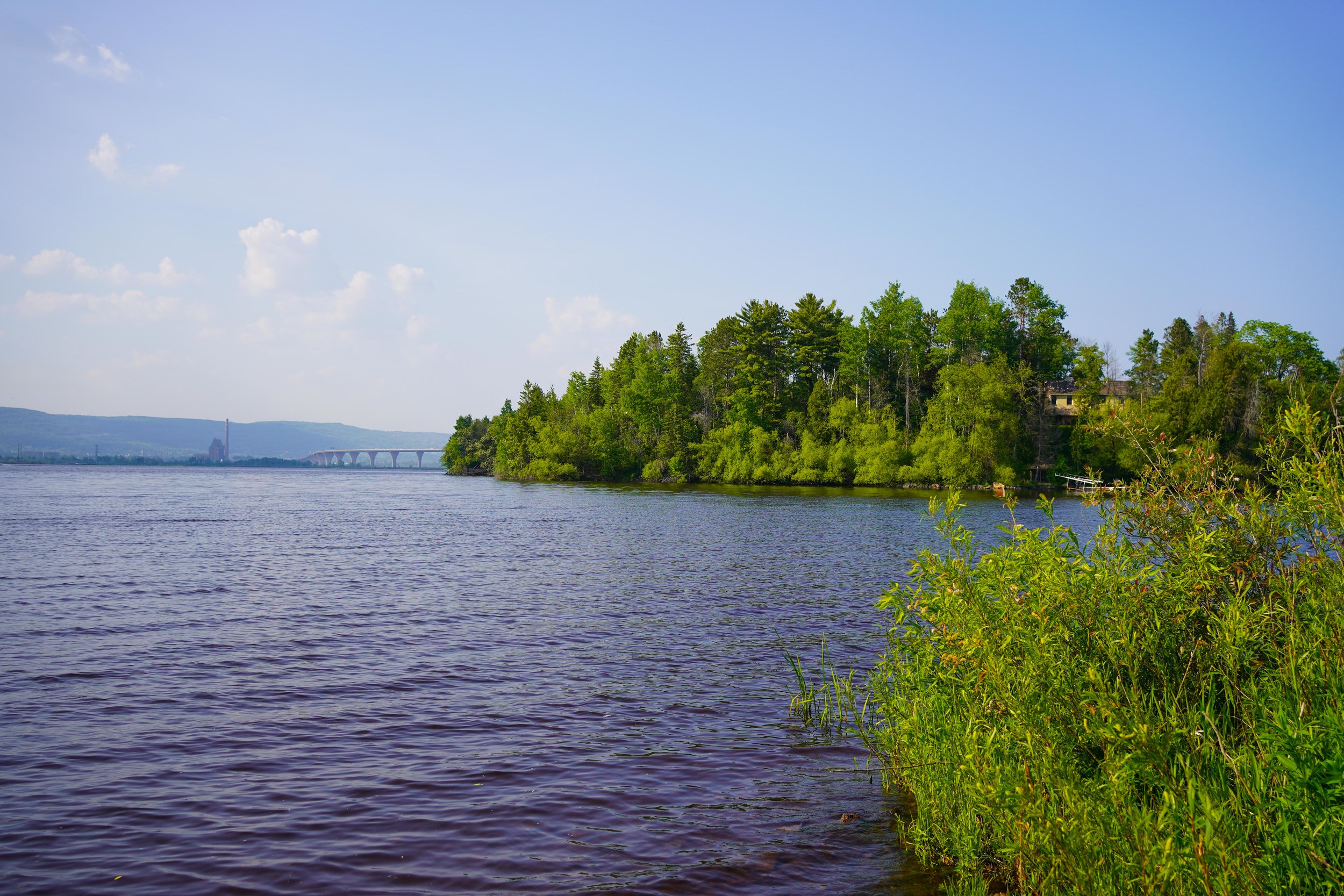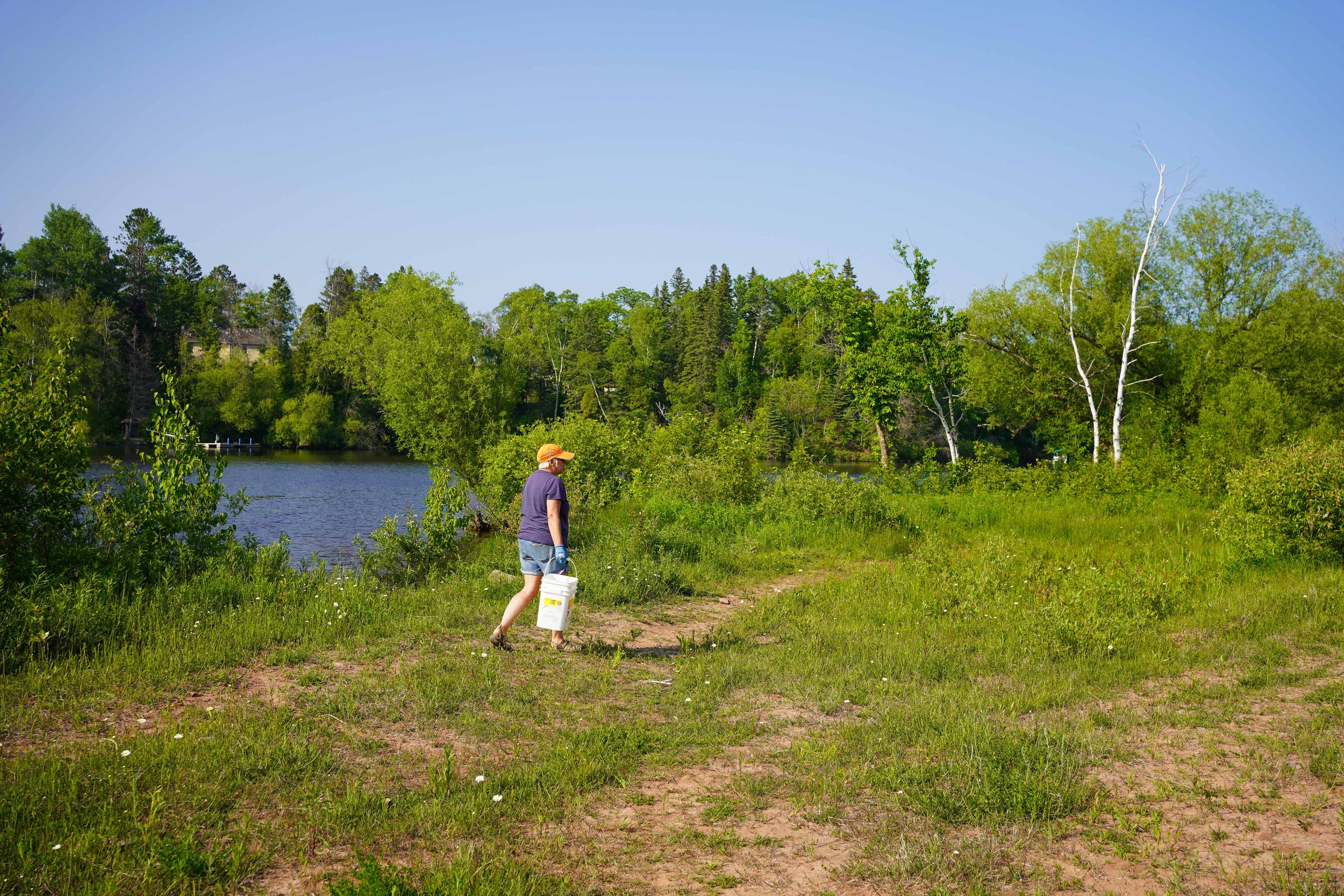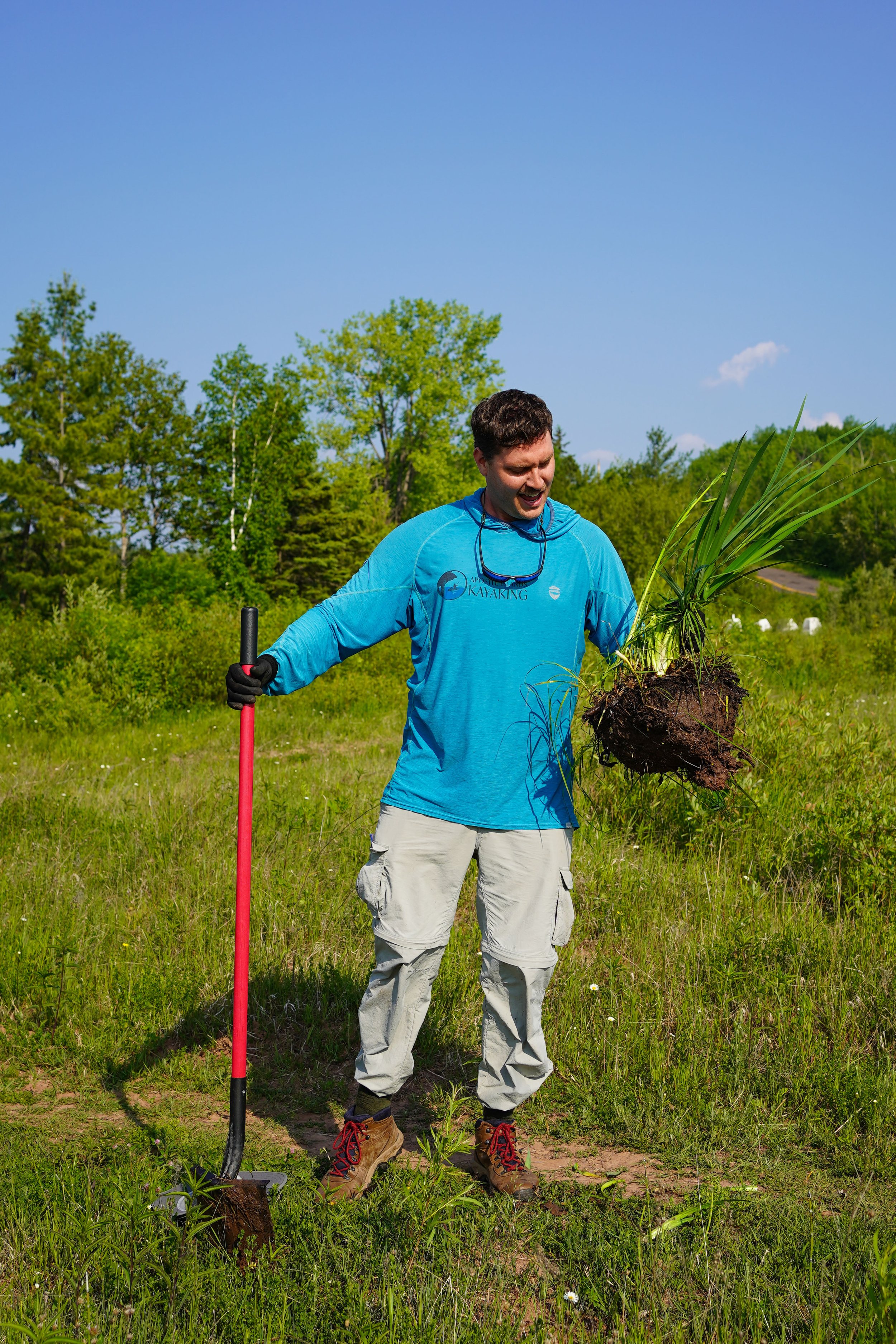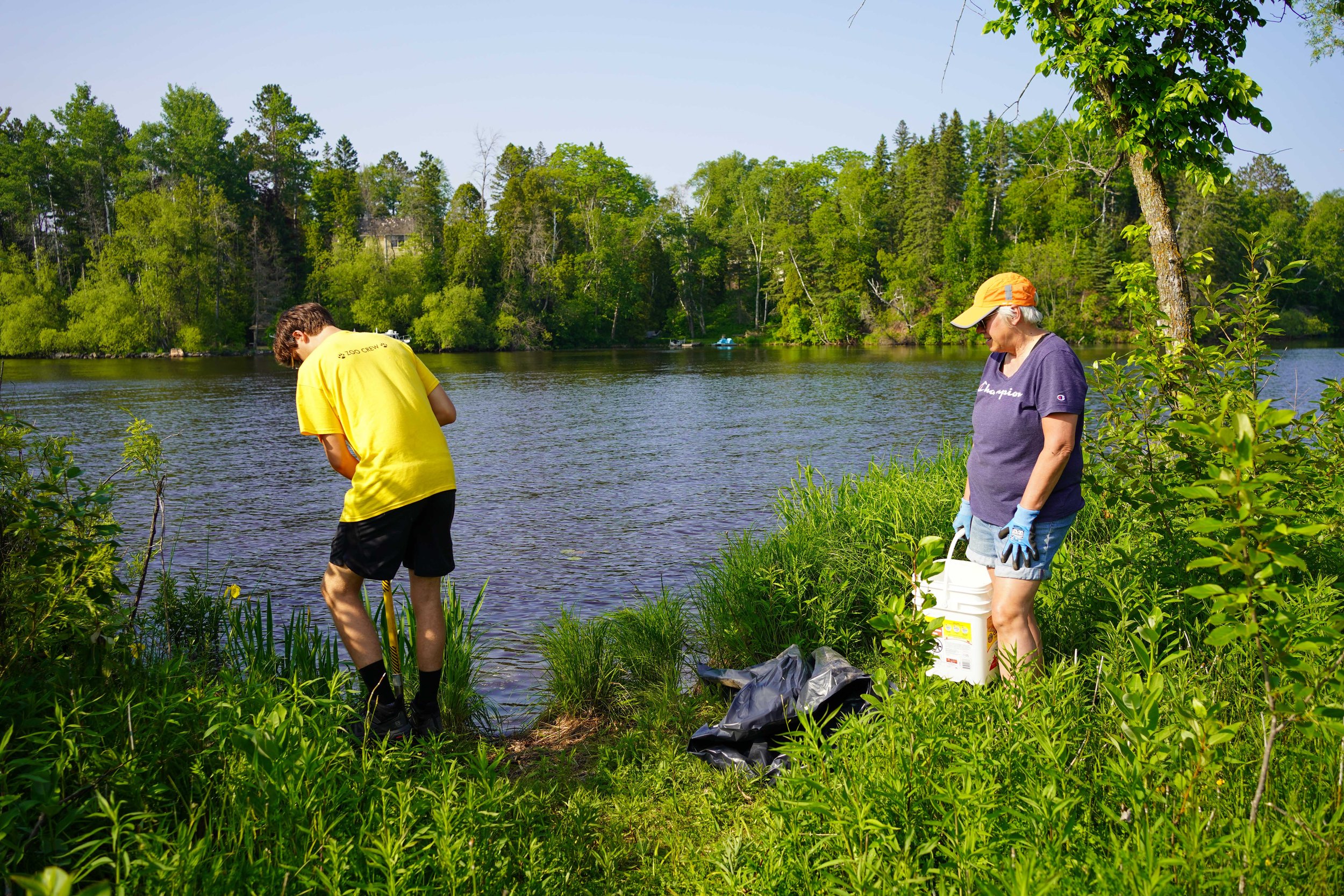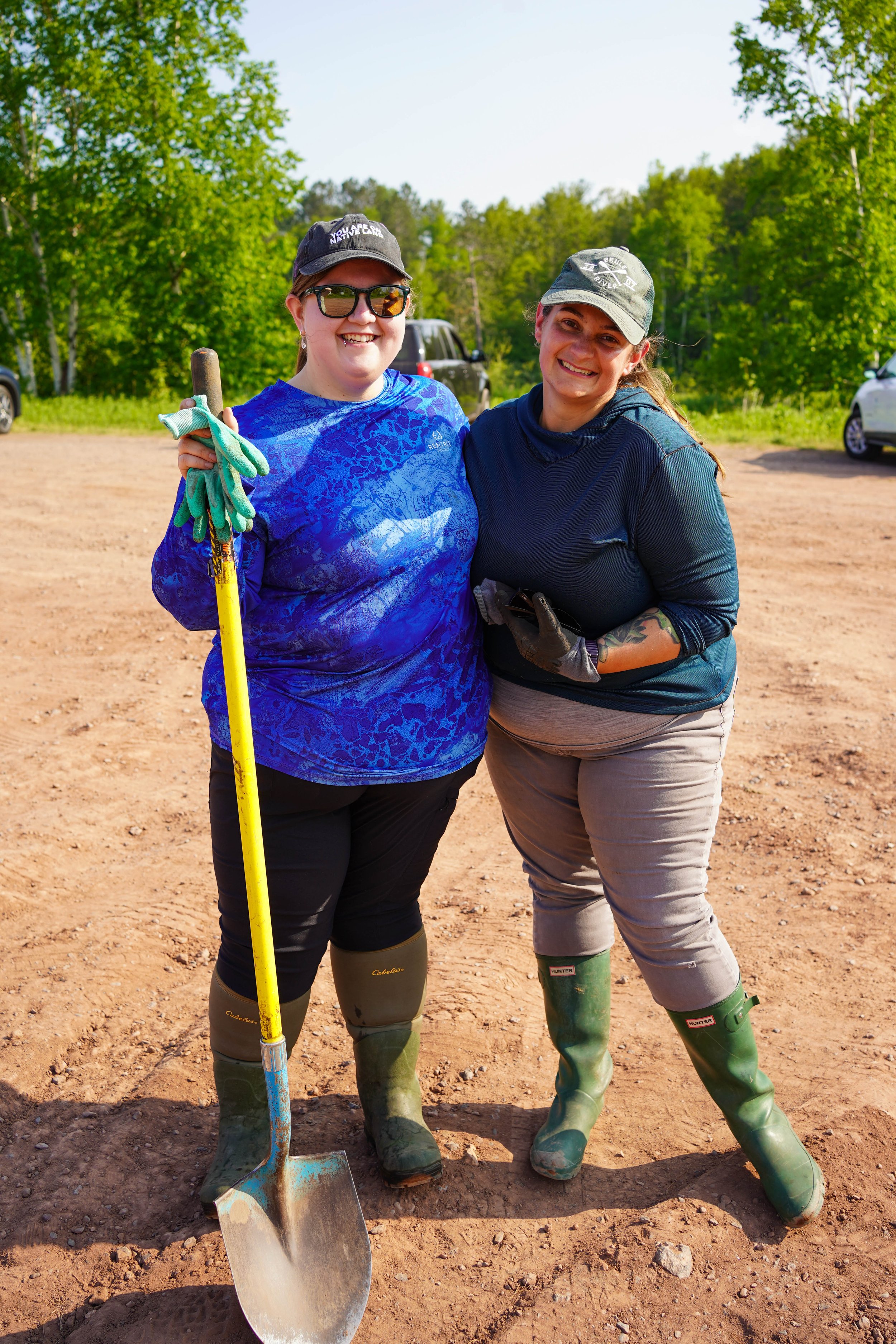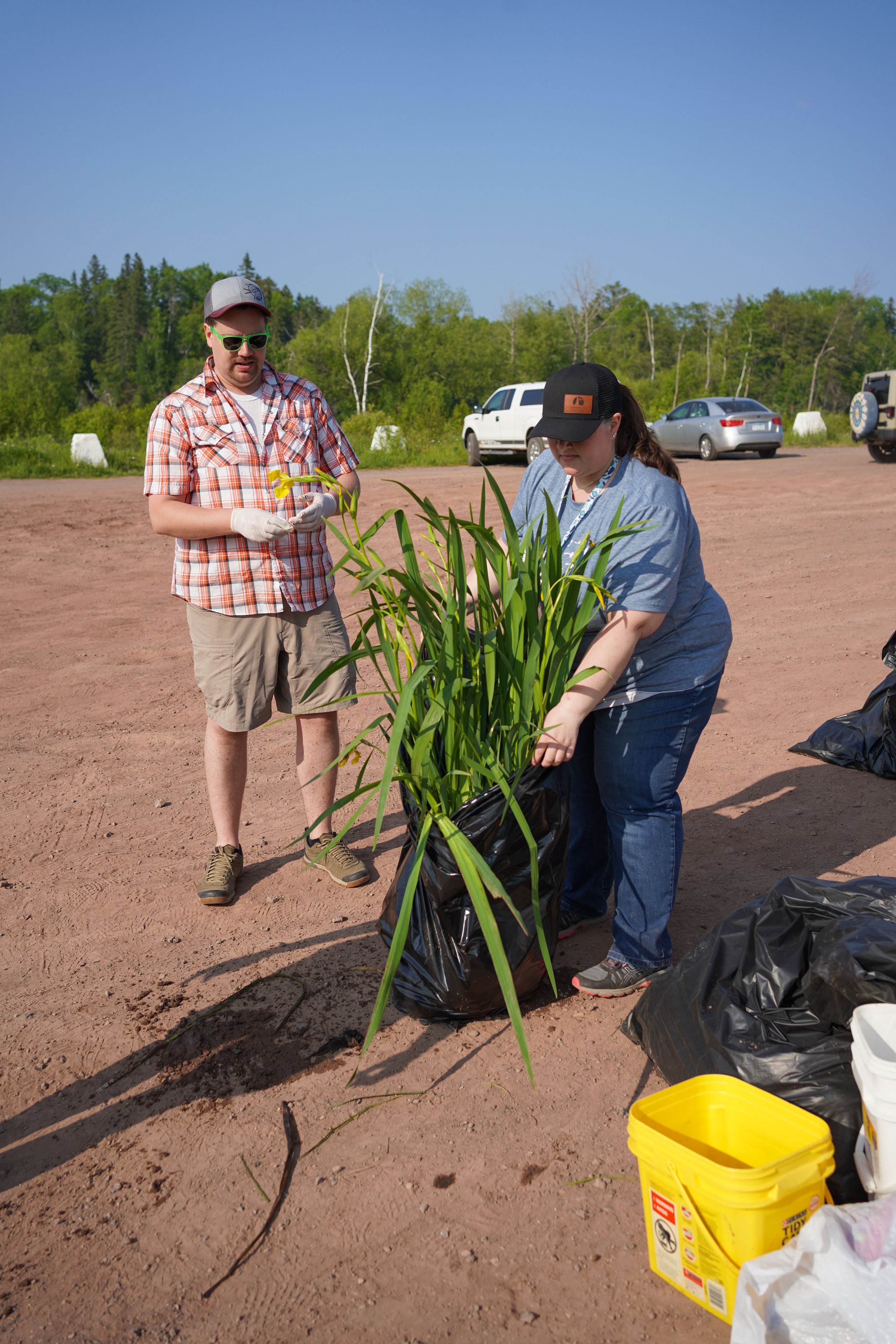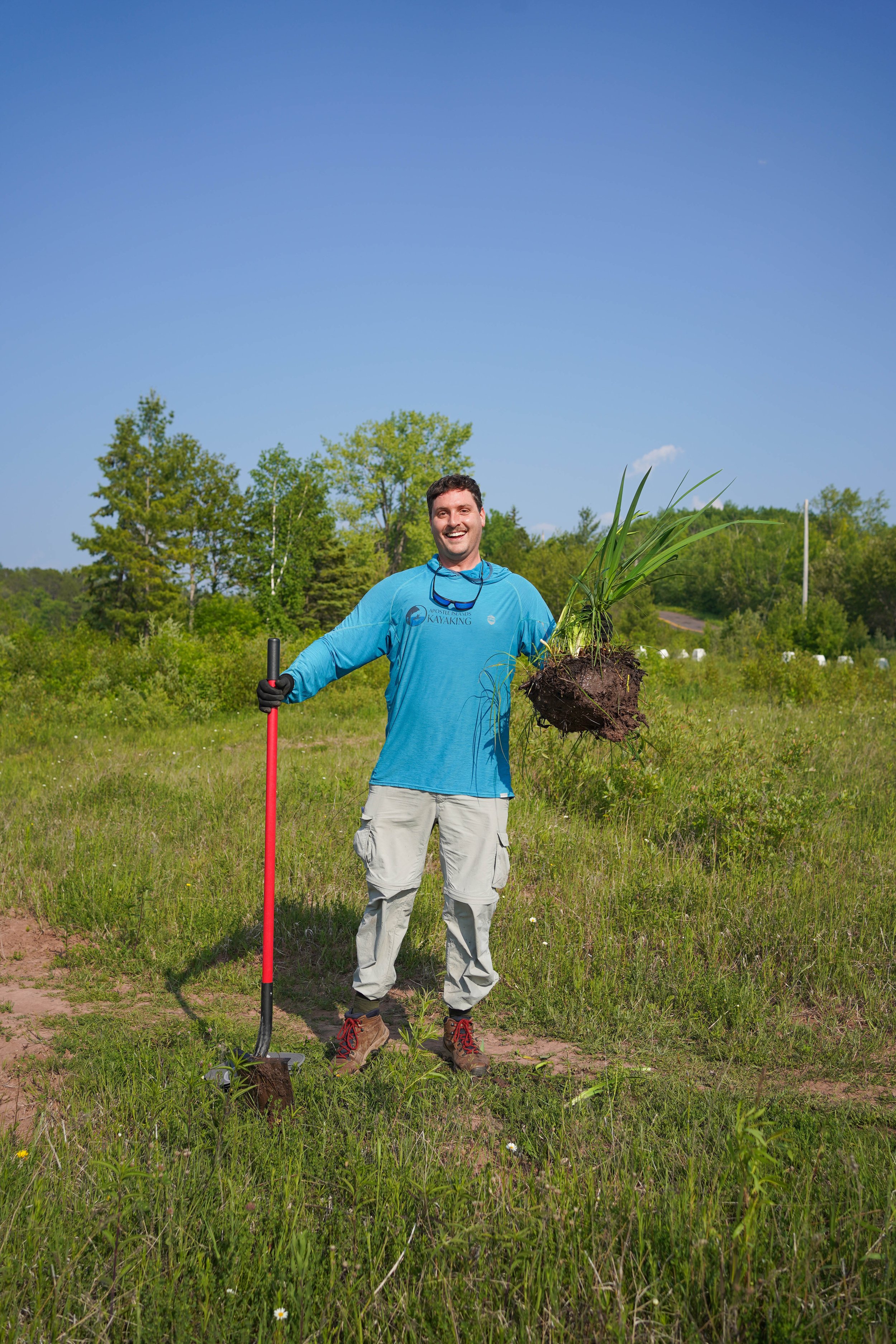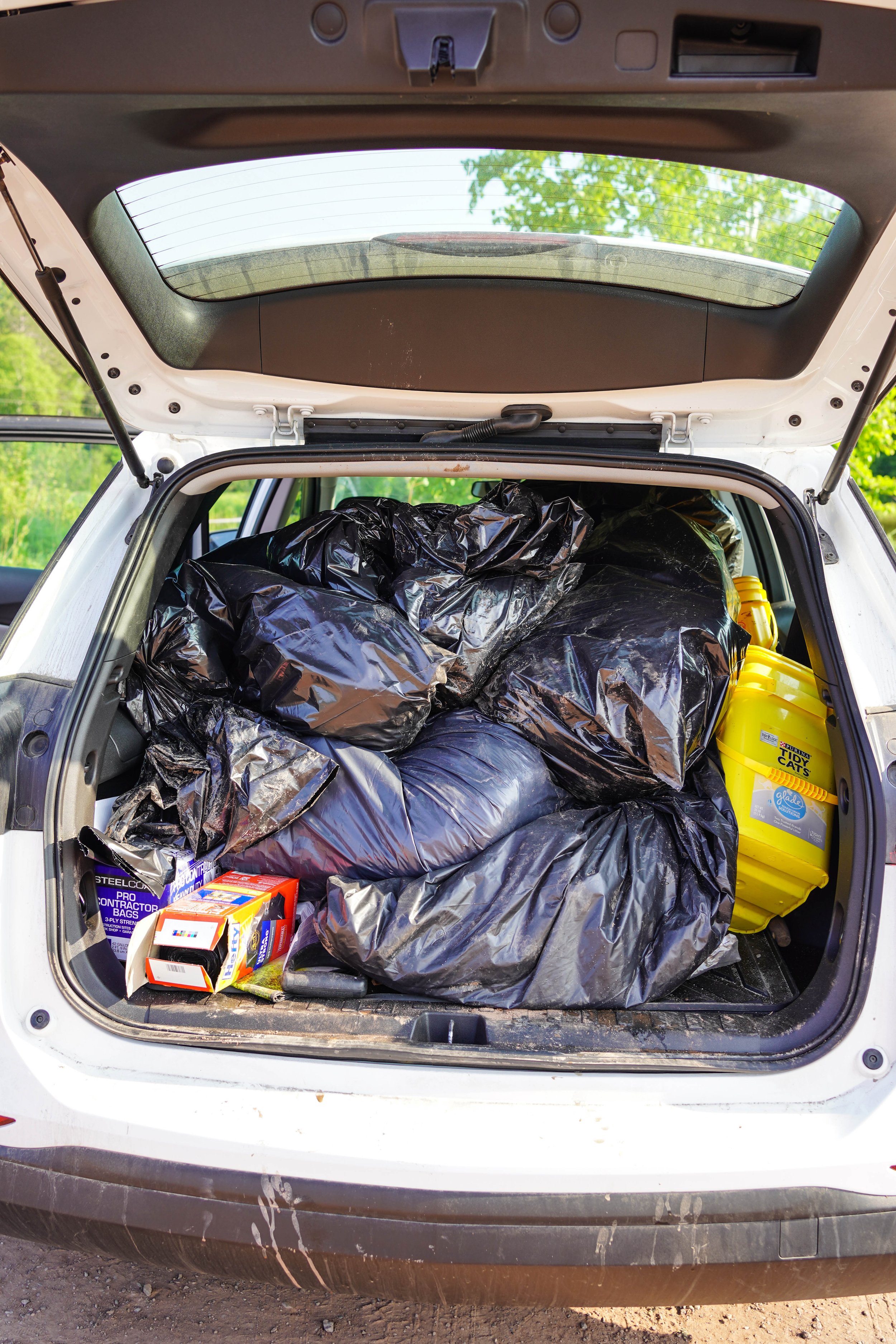2023 Spring Cleanup & Invasive Species Removal at Woodstock Bay Public Landing (PHOTOS)
Get that yellow iris out of there!!! While beautiful, yellow flag iris are an aquatic invasive species and they have spread into the St. Louis River system. Thanks to the help of our AMAZING volunteers, on June 22nd we were able to remove an SUV full of iris from Woodstock Bay Public Landing in Superior, Wisconsin.
As our volunteers can attest, these tenacious plants gain a foothold in our aquatic ecosystems and outcompete the native plant species for space and resources. Many of the clumps of iris that we removed weighed several hundred pounds!
Not sure if you have yellow flag iris in your garden?
Here are some quick ways to identify this plant:
The yellow flowers! This species will produce large, yellow flowers during late June/July and that is a giveaway that you’re dealing with yellow iris.
If it’s not flower season, you can feel the stem which will have a thick mid-vein. The native species of blue flag iris in the river also has a mid-wein, however, it’s much thinner than in the yellow iris.
Seed Pods! After the flower season, iris develop seed pods. If you crack open the seed pod and see three compartments of seeds, that is the invasive yellow flag iris and those need to be disposed of in the garbage so they don’t spread.
Big thank you to both Jody Saylor (Volunteer, Events, and Program Coordinator) from the City of Superior for providing gear and a iris disposal transport vehicle, and Zach Stewart (Natural Resources/AIS Specialist) from the Douglas County Surface Waters Program for the knowledge and expertise to identify and remove the invasive iris from Woodstock Bay. Also, none of this would have been possible without YOU, our volunteers! Thank you for your continued support of the river.
If you would like more information about aquatic invasive species, please check out the Douglas County Surface Waters program to learn more: www.douglascountywi.org/waters

